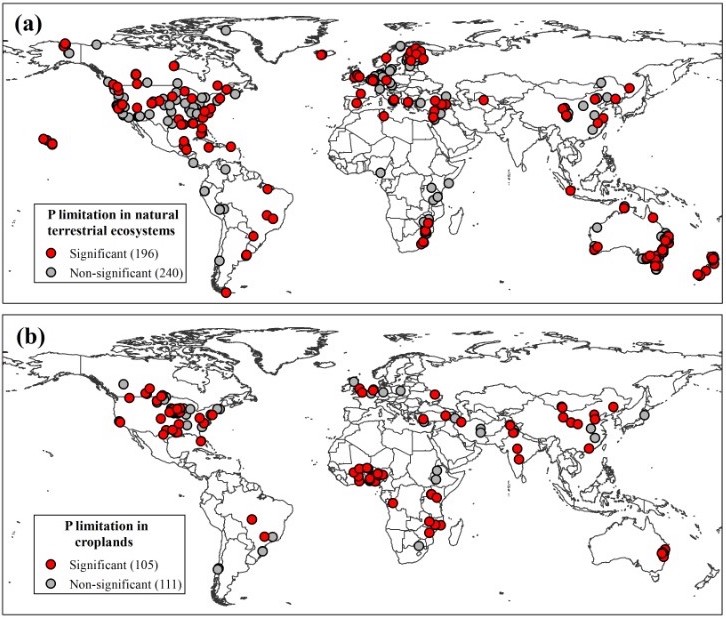New research from Northern Arizona University researchers challenges long-held assumptions that phosphorus limits aboveground plant growth mainly in tropical regions but not others. The paper, published this week in Nature Communications, suggests that this important nutrient actually helps govern plant production in temperate regions, too, and on every continent except Antarctica.
Authors Enqing Hou, Yiqi Luo and Lifen Jiang of the Center for Ecosystem Science and Society (Ecoss) at NAU worked with researchers from the South China Botanical Garden of the Chinese Academy of Sciences to analyze data from phosphorus field experiments conducted worldwide between 1955-2017. They saw significant phosphorus effects globally, from sub-arctic to temperate zones in the tropics, and in every major type of terrestrial ecosystem: croplands, forests, grasslands, tundra and wetlands. According to the authors, nearly half (46.2 percent) of 652 P-addition field experiments revealed a significant phosphorus limitation on aboveground plant production. When phosphorus was added, the effect was large, increasing aboveground plant production by more than a third (34.9 percent) in natural terrestrial ecosystems—7.0–15.9 percent higher than previously suggested.
Along with sunlight and water, terrestrial plants need nitrogen and phosphorus to grow. As researchers investigate plants’ critical role in regulating the Earth’s temperature and carbon storage capacity, the part that these nutrients play—and their importance compared to other limiting factors—is key to understanding how ecosystems throughout the world will function in this century and the next.
“These results highlight the critical role phosphorus plays in terrestrial plant growth around the globe,” Hou said. “While our findings don’t call for phosphorus fertilization, which may cause the loss of biodiversity, we do need to build phosphorus limitation into terrestrial ecosystem models and the way we think about global plant production.”
Because the research community has historically considered phosphorus limitation a primarily tropical phenomenon, phosphorus has not been factored in to important global terrestrial ecosystem models—the programs that predict how much carbon Earth will “inhale” (sink) and “exhale” (‘source’) each year. These models are used by policymakers and others to make important climate and agricultural decisions. Hou’s study makes a strong case for incorporating phosphorus into such models, since the way the element limits plant growth ultimately affects how much carbon plants can store, and thus, the potential of the global carbon “sink” in future years.
Hou’s work is part of a larger project of the Luo lab to incorporate observational data into terrestrial ecosystem models and, in doing so, make them more accurate and globally relevant. By recasting phosphorus’s role in the global plant growth picture, Hou’s analysis underscores the importance of building and refining terrestrial ecosystem models like Luo’s, ones which rely on data-model fusion to make better predictions about how much carbon the earth can store now and in the future.
Kate Petersen | Center for Ecosystem Science and Society
(928) 523-2982 | kate.petersen@nau.edu




